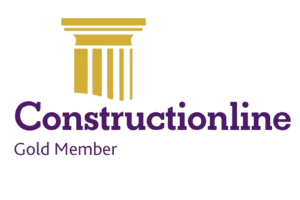To obtain house extension permission and planning approval, homeowners must consult their local planning authority to identify specific requirements and determine if a full planning application is necessary. Detailed plans, including site and floor layouts, should be submitted, adhering to local guidelines and regulations. Additional scrutiny and specific considerations apply for extensions in specialized areas like conservation zones or listed buildings. Continued exploration can reveal intricate details and exceptions regarding local planning regulations.
What is Planning Permission and Why Is It Needed for a House Extension?
Planning permission is a regulatory mechanism determining whether certain building projects, including house extensions, can proceed.
It guarantees that developments are safe, appropriate for the area, and consistent with local planning policies.
Homeowners must ascertain whether their extension requires such permission, as some smaller projects might be covered under permitted development rights.
Understanding Planning Permission for an Extension
Obtaining planning permission is a vital part of the development process when planning a house extension.
Planning permission is official authorization granted by the local planning authority for a proposed development or building project, which is required to guarantee that the extension aligns with local development guidelines and the Town and Country Planning framework. Homeowners must apply for planning consent to confirm that their proposed modifications will not adversely affect the surrounding area or breach applicable regulations.
Planning involves rigorous assessments against building regulations, planning terms, and zoning laws. It often includes a neighbour consultation scheme to inform nearby residents about the proposed development. Homeowners may also be required to pay a Community Infrastructure Levy, especially in developments that may impact local infrastructure.
Obtaining full planning permission confirms that the project complies with all legal and environmental standards, preventing potential planning enforcement action that could halt the build or require costly rectifications. Without this approval, the extension may be deemed unauthorised.
Homeowners often engage a professional planning consultant to navigate this complex process efficiently. These professional advisers can provide planning advice, assess whether the existing property meets householder allowances, and guide you on how best to develop the space.
For those wondering, do you need a permit for a house extension? The answer depends on whether your home is located in a conservation area, the general scale of the proposed work, and whether your plans fall within permitted development rights.
Understanding how to get planning permission for an extension includes checking local guidelines, preparing drawings and documents, and submitting your application through the government’s planning portal or your local authority’s planning office.
Whether you’re looking to improve your current home, add a flat, or undertake a similar expansion, ensuring the place you’re developing is treated with due diligence and legal compliance is important. Failure to do so can result in serious consequences, including denied applications and forced extension removal.
When Do You Need Planning Permission?
Planning permission for extensions ensures that the proposed project complies with local council regulations and does not adversely affect the surrounding neighborhood. While many house extensions need formal planning approval, some may fall under permitted development rights and not require it.
Particularly, a full planning application might be necessary when the extension affects the character of a conservation area or exceeds specified dimensions. The local planning office evaluates submissions against planning conditions and building regulation approval, safeguarding community interests and structural safety.
Planning permission is vital to avoid legal disputes and potential demolition orders, guaranteeing that all construction complies with local and national building standards.
Are There Extensions That Don’t Need Planning Permission?
Are there instances where house extensions do not require planning permission? Yes, homeowners can build an extension under certain conditions without planning permission, thanks to permitted development rights.
These rights allow minor improvements and expansions without planning approval, provided they adhere to specific guidelines.
Key examples of extensions without needing planning permission include:
- Single-storey extensions at the rear of the property are subject to size limitations.
- Side extensions that are single-storey and do not exceed half the width of the original house.
- Loft conversions of a certain volume, depending on the property type.
- Conservatories and orangeries that stay within prescribed size and height restrictions.
Understanding these permitted development rules is essential before you plan your extension.
How do you apply for planning permission for an extension?
The process of applying for planning permission for a house extension involves several important steps that homeowners need to follow.
Having a clear understanding of the necessary documents for submission is vital, as they significantly impact the success of a planning application. Furthermore, being informed about effective strategies to increase your likelihood of approval can help streamline the process and minimize potential delays.
Steps to Apply for Planning Permission
To apply for planning permission for a house extension, homeowners must first consult with their local planning authority (LPA) to understand specific requirements and restrictions in their area.
Steering through the planning permission process involves understanding local planning policies and ensuring compliance with planning regulations.
- Contact your local planning authority: Begin by discussing your project to understand planning requirements and restrictions.
- Determine if a full planning application is needed: Some extensions only require a lawful development certificate.
- Review local planning rules: Align your extension plans with local planning policies.
- Apply for full planning permission: If needed, submit a full planning application following the guidance provided by your LPA.
Documents You’ll Need to Submit
Gathering the necessary documentation is important when applying for planning permission for an extension. Individuals are required to submit detailed proposal plans to their local authority to ensure adherence to applicable laws and development guidelines. These documents should consist of site plans, floor plans, and elevations, clearly showing both existing and proposed structures. In most cases, additional technical information may be required, especially when excavating for foundations or buildings near a road. If the property is on designated land or includes listed homes, more stringent criteria apply, and supplementary reports—like a heritage statement—may be necessary.
Besides the architectural drawings, applicants are typically required to create a complete application packet with a full application form, a design and access statement, and a schedule outlining the project’s timeline. Verandas, extensions, or additions that change the visual profile of the home can play an important role in how the authority evaluates the project.
To have the best chance of approval, all the changes must be thoroughly explained and comply with planning permissions and building regulations. Inaccurate or incomplete submissions could delay the process or lead to the need for retrospective approvals.
In circumstances where a home is listed or situated within a conservation area, extra care must be taken to ensure the submission is complete and delivered well before the intended date of construction.
Applicants should also monitor their application status regularly and be prepared to respond to feedback or requests for additional documentation. Moving forward with a well-prepared application speeds up the process and increases the benefit of avoiding future complications.
If you’re unsure how to get a permit for a house extension, consulting your local planning office or a professional planning consultant can help streamline the process and ensure your project aligns with legal requirements.
How to Get Planning Permission Approved
Once all the necessary documents have been collected, the next step is to formally submit the planning permission application for the house extension. Securing this approval is essential, particularly for extensions that may impact the existing structure or change the character of the surrounding neighborhood.
- Submit Detailed Plans: You’ll need to submit architectural drawings and site plans that illustrate the proposed building work.
- Consult Local Regulations: Guarantee compliance with development rights and specific local planning requirements.
- Seek Listed Building Consent: If the property is a listed building, listed building consent must be obtained in addition to planning permission.
- Request Prior Approval: Some extensions under permitted development rights still require prior approval.
Navigating these steps will help secure house extension permission efficiently.
Can You Build an Extension Without Planning Permission?
In some cases, homeowners can carry out extensions under Permitted Development Rights, allowing specific types of work to proceed without requiring formal planning permission.
However, specific limitations and conditions apply, and it’s essential to consult the local planning authority to ensure your project complies before moving forward. These rights come with strict limitations, and exceeding them can cause legal issues. Failing to secure planning permission when needed may lead to serious consequences, such as being required to remove or demolish the unauthorized structure.
Exploring Permitted Development Rights
Permitted Development Rights enable many homeowners to extend their properties without obtaining explicit planning permission. This flexibility allows certain types of extensions to move forward without formal approval, provided they meet specific guidelines.
- Detached and semi-detached house: Owners may add single-storey rear or two-storey extensions under permitted development rights.
- Principal elevation considerations: Any extension cannot alter the principal elevation facing a highway.
- Dimensional restrictions: The dimensions of the extensions are subject to limitations to qualify as permitted development.
- Planning permission: For more significant changes or if the development exceeds certain limits, homeowners might still need planning permission.
Limitations of Building Without Planning Permission
While it is possible to build certain extensions under permitted development rights, significant limitations exist that homeowners must consider. Determining whether you need planning permission depends on several factors, such as the size and location of the extension. Often, homeowners assume they don’t need planning permission if the project seems minor, but this can lead to complications.
Scenario: Do You Need Permission?
Extension exceeds half the building’s land; yes, there is a need for full planning.
Within permitted dimensions Generally, without the need for planning
Close to boundary Yes, get permission
Listed building Yes, need permission
In a conservation area: Yes, I need permission
Building without full planning permission can be convenient, but always verify to avoid enforcement notices.
Consequences of Ignoring Planning Permission
Building an extension without the necessary planning permission carries significant risks. If you make a house extension or modify an existing house without the required house extension permission, you could face serious consequences.
Not all extensions need planning permission; some smaller or less impactful projects won’t need planning permission under certain conditions, but verifying this before proceeding is essential.
- Legal Penalties: You may be subject to fines or legal action.
- Mandatory Alterations: Forced to undo or modify the extension at your expense.
- Sale Complications: Difficulties in selling your home due to non-compliance issues.
- Increased Costs: Additional costs to gain retrospective planning approval or defend against enforcement actions.
What Are the Building Regulations for an Extension to an Existing House?
When planning an extension to an existing house, it is important to recognize the need for building regulations approval. This set of standards, distinct from planning permission, ensures that the construction complies with essential safety and design requirements.
While many people ask, “Do house extensions need planning permission,” ensuring full compliance with house extension regulations is just as important. These two processes serve different purposes—planning deals with how development fits into the broader country planning framework while building regulations focus on technical standards like safety and sustainability.
Key regulations typically include aspects related to structural integrity, fire safety, energy efficiency, and the stability of internal walls. Features such as new windows, extensions near existing eaves, or changes that affect natural light to neighbouring properties are closely scrutinised. The person carrying out the work—whether a contractor or the homeowner—is responsible for ensuring that all work complies.
In the past, failure to comply has led to serious enforcement issues, especially in protected zones such as an Area of Outstanding Natural Beauty. Projects involving a microwave antenna, alterations to building fronts, or significant changes in height relative to the highest part of the existing roof structure may require greater oversight. Even previous extensions completed by an earlier owner can affect current decisions, so it’s wise to check historic approvals before you buy a property.
Establishing a connection with local building control early can help resolve concerns before they become costly problems. Whether your plans constitute a major development or not, following the proper legal act and submission process is essential.
Extensions can mean different things depending on how they are built—some may be permitted under existing regulations, while others may require full applications. Determining what is or isn’t allowed will depend on your situation.
To make the process smoother, seek professional tips, consult your local authority, and don’t overlook the importance of compliance in protecting your investment and the public interest.
Do You Need Building Regulations Approval?
If you’re planning to extend your existing house, it is crucial to determine whether you need building regulations approval.
Building regulations are essential to ensure that any modifications, including extensions, are safe, efficient, and compliant. Key considerations include:
- Single-Storey Extensions: Ensure adherence to maximum height and eaves height limits.
- Side Extensions: Confirm compliance with floor space restrictions and the connection to the existing roof.
- Rear Extensions: Check the rules governing how far the extension can extend from the original rear wall.
- Roof Pitch: Modifications should harmonize with the roof pitch of the existing house.
Understanding these aspects can help you plan compliant extensions that enhance your home while respecting legal standards.
Key Building Regulations to Consider
Several key building regulations must be considered when planning an extension to an existing house.
First, the nature and scope of the extension must align with the existing house in terms of materials and architectural style, especially when the extension is visible from the exterior or lies close to the curtilage of the property. This becomes particularly important in a town setting where aesthetic continuity and community impact are under closer scrutiny.
If the planned extension includes a balcony, is more than one storey, exceeds four meters in height, or includes raised platforms, further examination under building regulations is typically required. Anyone wondering, “Do you need planning permission for an extension on your house,” should consider these factors carefully—building regulations apply even when formal planning permission may not be necessary.
For any extension within more than three meters of a boundary, the person undertaking the work must implement appropriate fire safety measures, especially where proximity to other buildings increases risk. Features such as chimney modifications, garden walls, or even the addition of a roof light must be designed by current building codes. These installations must also meet standards for energy efficiency and proper ventilation.
Windows on side elevations and those facing neighbouring buildings should be obscurely glazed to ensure privacy in both directions. In this context, the positioning and type of glass used can make a structure compliant or liable to enforcement actions.
Regardless of whether the project requires a full extension permit, it is advisable to construct in line with all relevant building regulations. In some cases, a qualified architect can help guide you through planning and regulatory requirements, ensuring everything is addressed in the right direction.
Ultimately, even if your project does not require approval from the Secretary of State or your local planning office, adhering to building regulations is essential for ensuring that your extension is safe, durable, and legally sound.
How Building Regulations Differ from Planning Permission
Understanding the distinction between building regulations and planning permission is essential for any homeowner planning an extension.
While planning permission focuses on the appropriateness of the development within its environment and impact on neighbours or the community, building regulations guarantee that the construction of the building is safe, healthy, and efficiently uses energy.
Exemptions: Smaller extensions often don’t need planning permission but must comply with building regulations.
Planning Permission: You might need permission for major changes or new construction.
Building Regulations are mandatory for any construction to guarantee safety, accessibility, and energy efficiency.
Submission Process: For planning permission, you must submit detailed plans to the local authority; building regulations may require separate approval.
How Does Living in a Conservation Area Affect Your Planning Application?
Living in a conservation area introduces specific challenges and requirements for homeowners wishing to extend their properties.
Due to these areas’ historically outstanding natural beauty or architectural significance, extensions often require careful consideration to guarantee they preserve the character of the locality.
Homeowners must work closely with the local planning authority to navigate these special considerations and obtain the necessary approvals.
Understanding Conservation Areas
When you live in a conservation area, obtaining permission for a house extension can be particularly complex.
Conservation areas are designated due to their historical or architectural significance, and this status can impose stricter controls over any modifications to buildings within them.
Key points to bear in mind include:
- Need planning permission: Almost all changes, including minor modifications, require approval.
- Permission to knock down: Demolishing a building is often restricted.
- Planning permission to replace: Any new structures must closely match the area’s character.
- House without alterations: Owners may face limitations on external appearance changes.
Understanding these constraints is essential for homeowners in conservation areas, national parks, or near sites of special scientific interest. Exploring garage conversion ideas for your space could offer practical and creative solutions if you consider alternative home improvements requiring fewer planning challenges, exploring garage conversion ideas for your space could offer practical and creative solutions.
Special Considerations for Extensions in Conservation Areas
When planning an extension in such areas, specific rules apply, especially concerning the structure’s size and placement.
For instance, in most cases, a single-storey rear extension cannot extend beyond four meters from the rear wall—two meters for a detached house and three meters for other house types. This limitation helps maintain the amenity of surrounding properties and prevents excessive overshadowing or loss of light.
If you plan to add no more than four metres to one storey, the extension must not extend beyond seven metres from the rear wall and must not be higher than the highest part of the existing roof. In any situation, compliance with house extension building regulations is essential to ensure safety and legality.
Any upper-floor window facing the side must be obscure-glazed to protect neighbours’ privacy. Any openings must be non-opening unless they are more than 1.7 meters above the ground floor, a standard state requirement to reduce overlooking risks.
Residents may also require planning permission to replace features such as windows or to install a fence, particularly in conservation areas where maintaining the historical character is a priority. In these situations, even minor alterations may need formal approval.
When it comes to charges, there may be a charge for submitting planning applications, and some developments might also attract a community infrastructure levy. It’s always best to investigate what’s practicable before beginning work to avoid delays or enforcement actions.
If you’ve ever stood in your garden and wondered whether your plans comply, consulting your local authority early in the process will save time and frustration later.
Working with the Local Planning Authority
Residing in a conservation area requires a cooperative approach with the local planning authority to guarantee that any house extension complies with stringent regulations to preserve the area’s historical and architectural integrity.
When planning your extension, understanding the specific requirements is essential. Here are some key points to take into account:
Larger home extension schemes require additional scrutiny to ensure they harmonize with the area’s character.
You’ll need to submit a detailed application if your project affects the wall of the original house or expands the house by more than three meters.
You’ll need a party wall agreement if construction impacts a shared boundary.
You don’t need planning permission for minor improvements, but this varies by location.
What Should You Know About Planning Permission for Extensions in a Listed Building?
When planning an extension on a listed building, it is vital to understand its designated status and its implications on obtaining planning permission.
The process involves navigating specific challenges, including strict regulations designed to protect the building’s historic character. Because of these requirements, it’s crucial to understand how to apply for planning permission for an extension, particularly when it involves a protected or historically significant structure.
Finding viable solutions that meet these regulations is crucial for a successful extension project. This often requires close collaboration with conservation officers, heritage consultants, and local planning authorities to ensure your proposal is suitable and has a strong chance of approval.
What is a Listed Building?
A listed building, designated for its architectural or historical significance, is subject to specific regulations when it comes to modifications, including extensions.
If you’re planning a new extension on a listed building, here’s what you should know:
- Detailed Application: You’ll need to submit detailed plans that preserve the architectural integrity of the original house.
- Historical Sympathy: Designs must harmonize with the existing structures, particularly if the building is semi-detached.
- Extra Space Considerations: Any dream extension must carefully integrate with the existing space to avoid overwhelming the historic character.
- Permission Essentials: Generally, you won’t need planning permission for minor alterations, but anything significant will require consent to guarantee the building’s heritage is preserved.
Obtaining Planning Permission for Listed Buildings
Building on what has been outlined regarding modifications to listed buildings, obtaining planning permission for extensions on such properties requires a keen understanding of local and national regulations.
Suppose you’re planning an extension that does not exceed half the width of the original building and is no more than eight meters for a detached house or six meters for any other home. In that case, you generally won’t need planning permission under Article directions—unless these have been established by the local authority to restrict permitted development rights.
However, because it’s a listed building, you must submit a detailed application highlighting how the extension will not harm the building’s character. Engaging with your conservation officer and consulting heritage guidelines before you decide on the final design is highly recommended.
For any extension rising above the existing floor level or larger-scaled projects, you’ll need full planning permission and possibly additional approvals to guarantee compliance with heritage protection standards. In some cases, a building permit extension may be required, particularly if the project timeline is extended or complications occur during construction. Upon completion, the extension should show respect for the building’s historic fabric and consider its impact on neighbors and the surrounding environment. Successful planning approvals often involve early consultation, professional heritage assessments, and clear evidence that the proposal preserves the building’s significance.
Challenges and Solutions for Extensions in Listed Buildings
Understanding the specific challenges of extending a listed building is essential, as these structures are protected due to their historical significance. The process of obtaining planning permission involves There are several complexities that demand careful attention and respect for the building’s architectural integrity:
- Historical Accuracy: Extensions should harmonize with the original architectural style and materials.
- Regulatory Compliance: Strict adherence to guidelines established by heritage organizations is essential.
- Community Impact: Assessing the extension’s effect on the surrounding historic environment.
- Technical Constraints: Addressing limitations in construction techniques and materials to protect the building’s original character. Successfully managing these challenges ensures the extension not only improves the listed building’s functionality and value but also preserves its cultural significance.
Conclusion
Steering through the intricacies of planning permission and building regulations is vital for any house extension project. When working with conservation areas or listed buildings, it is crucial to understand and adhere to local regulations to prevent legal issues and ensure the safety and integrity of the structure. By diligently applying for the necessary approvals and adhering to regulations, homeowners can enhance their property, potentially increasing its value and functionality.















